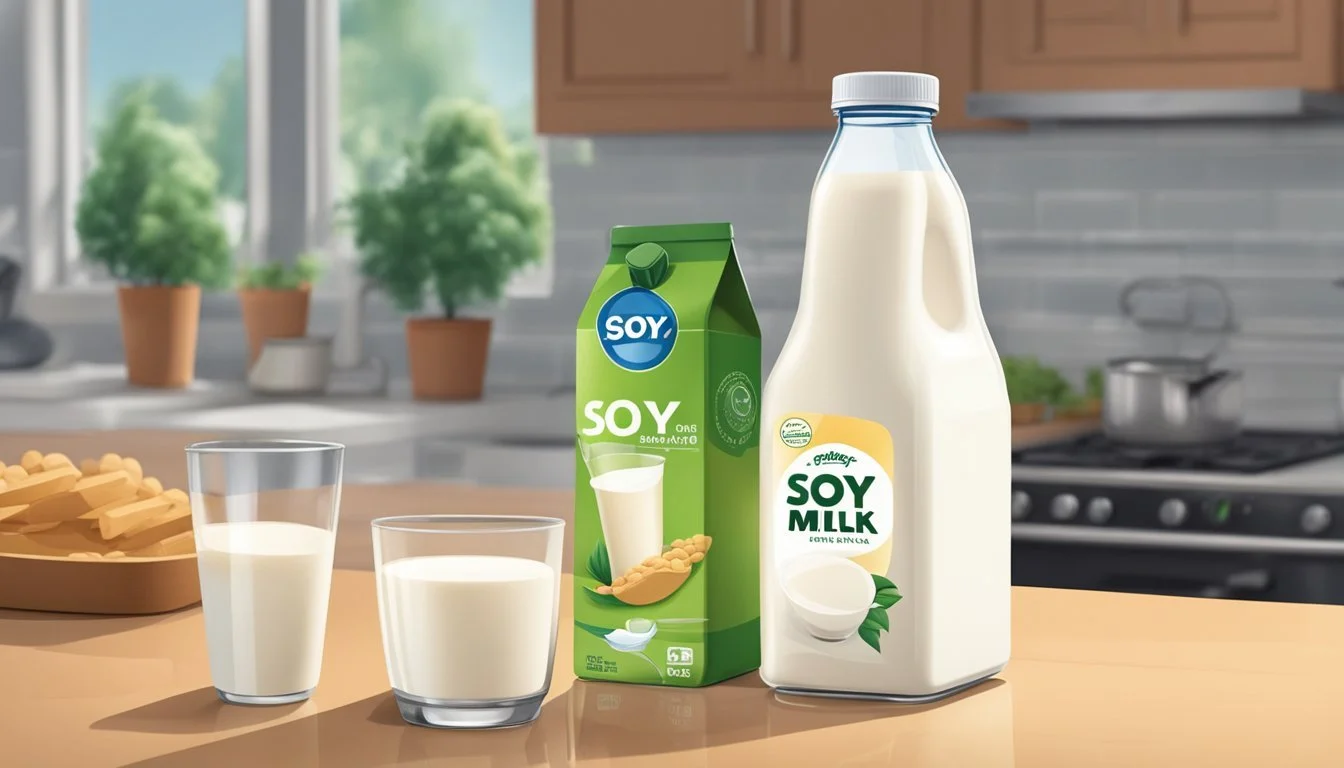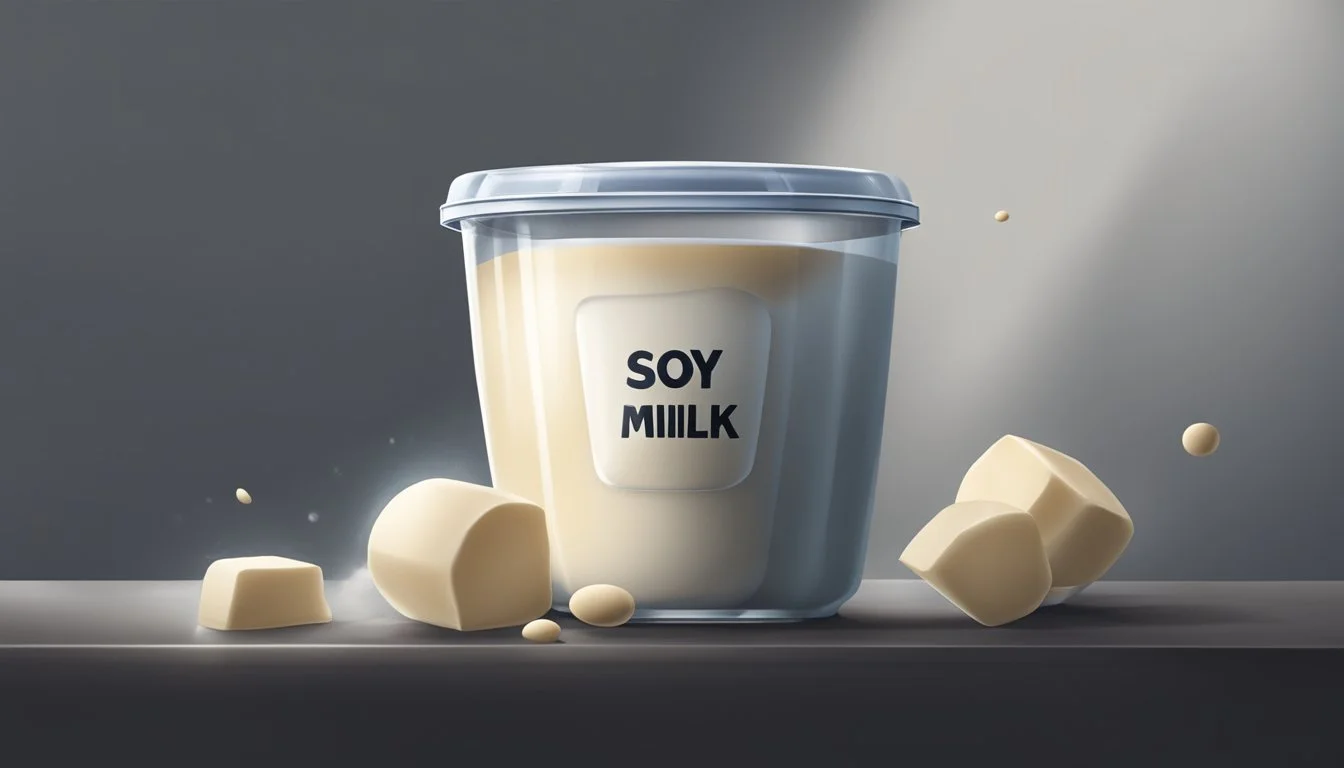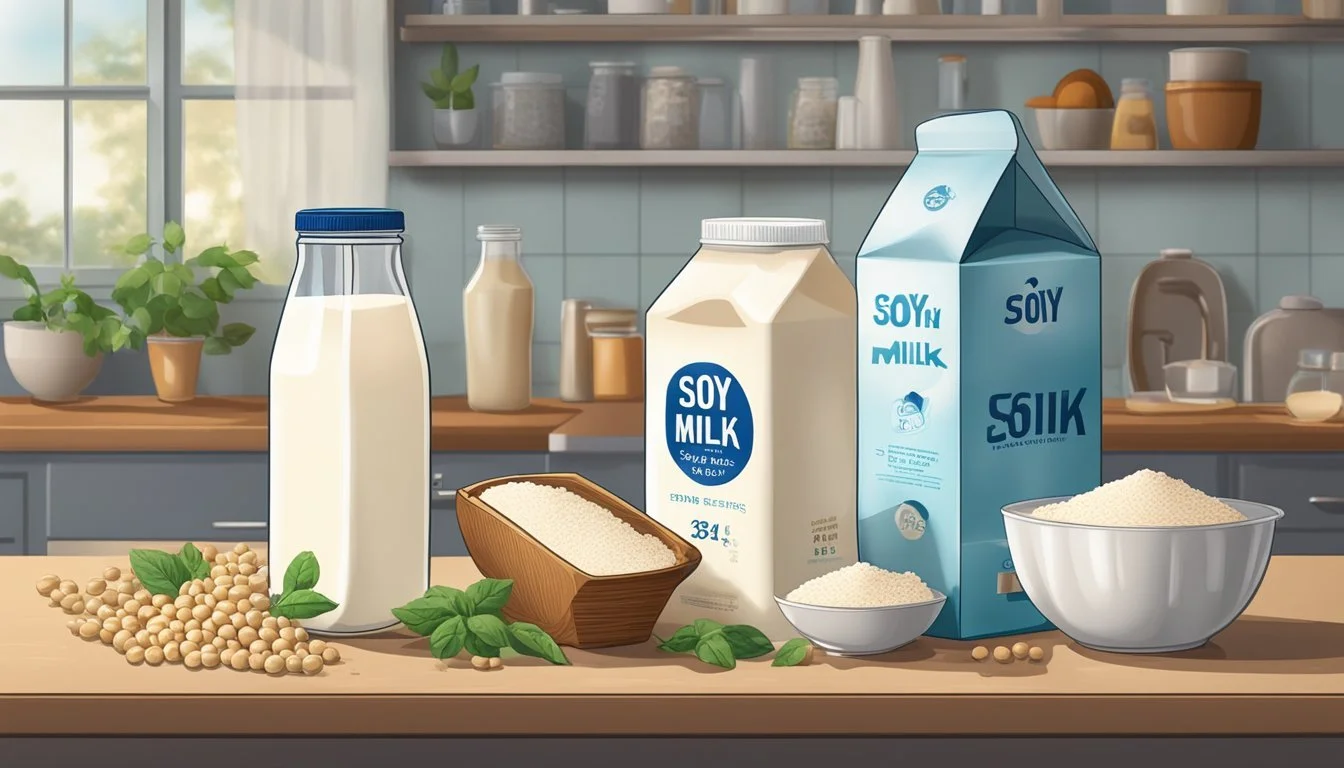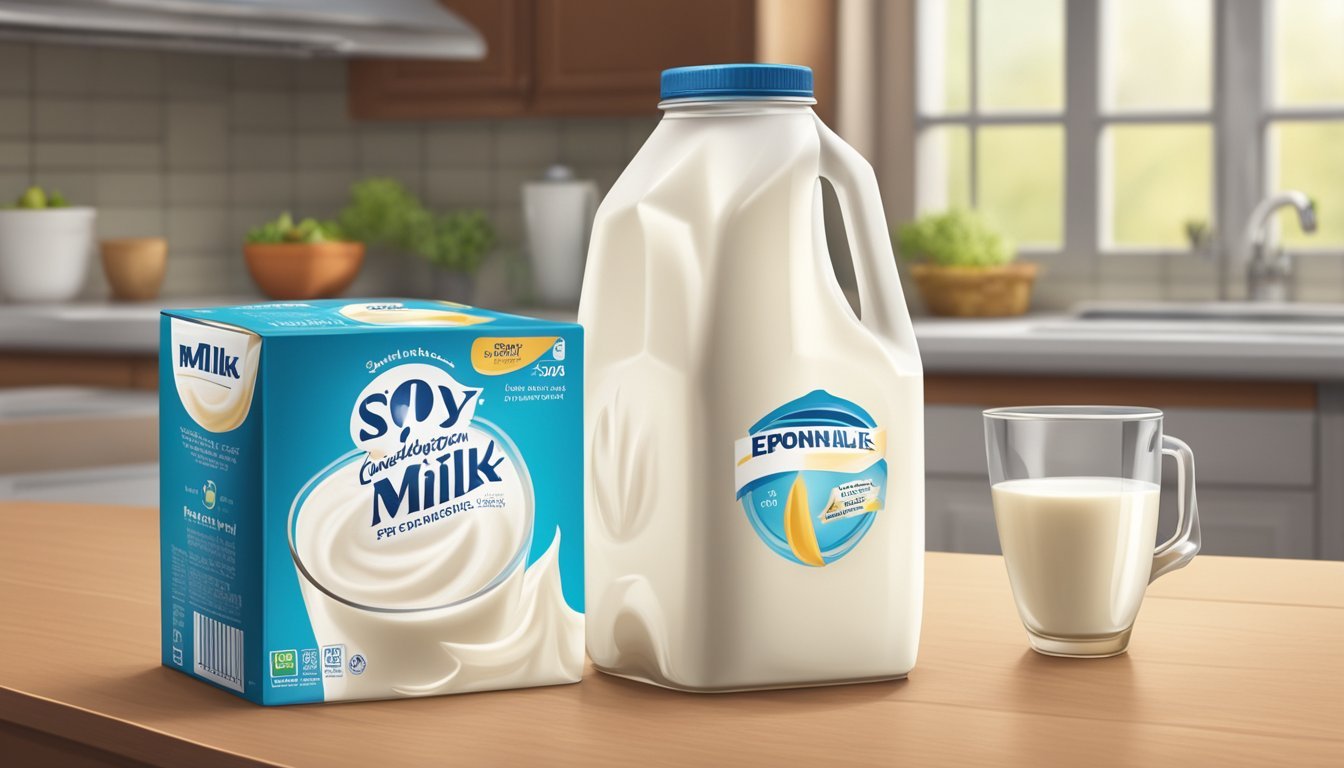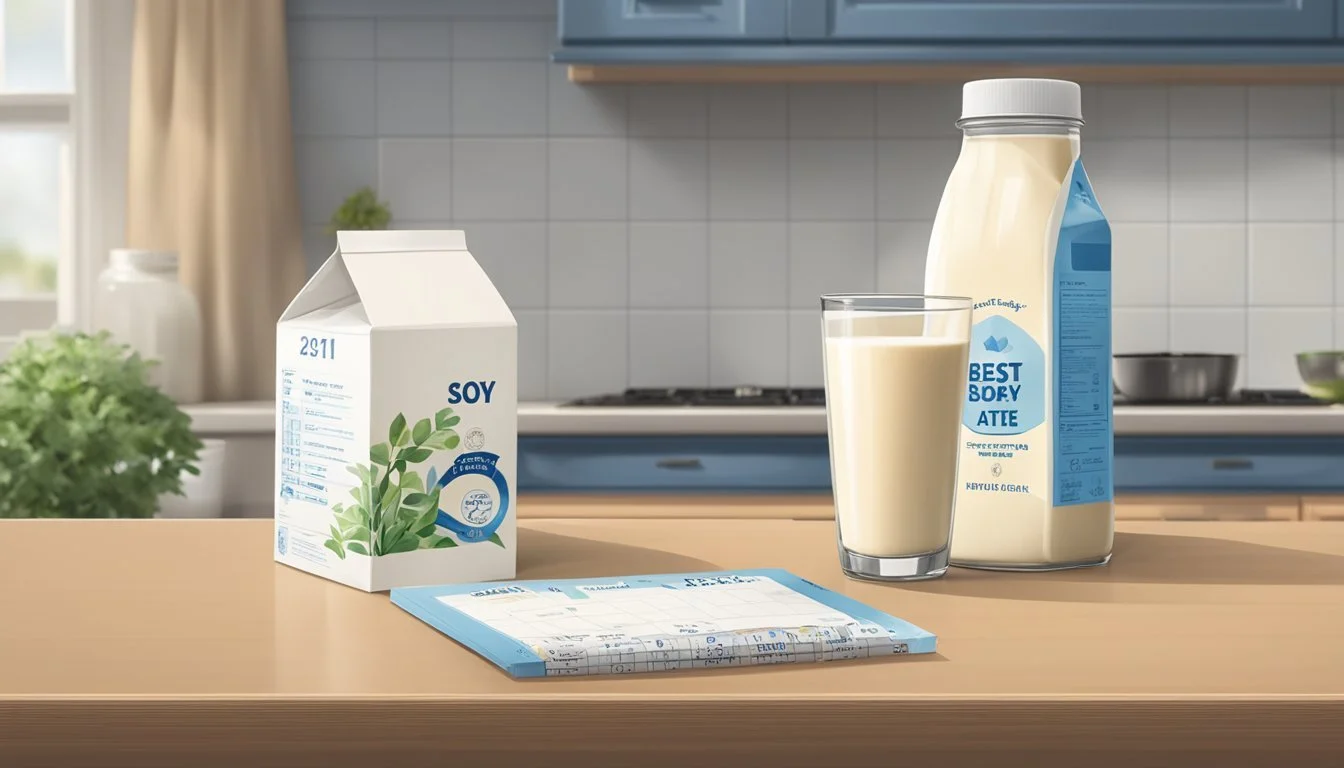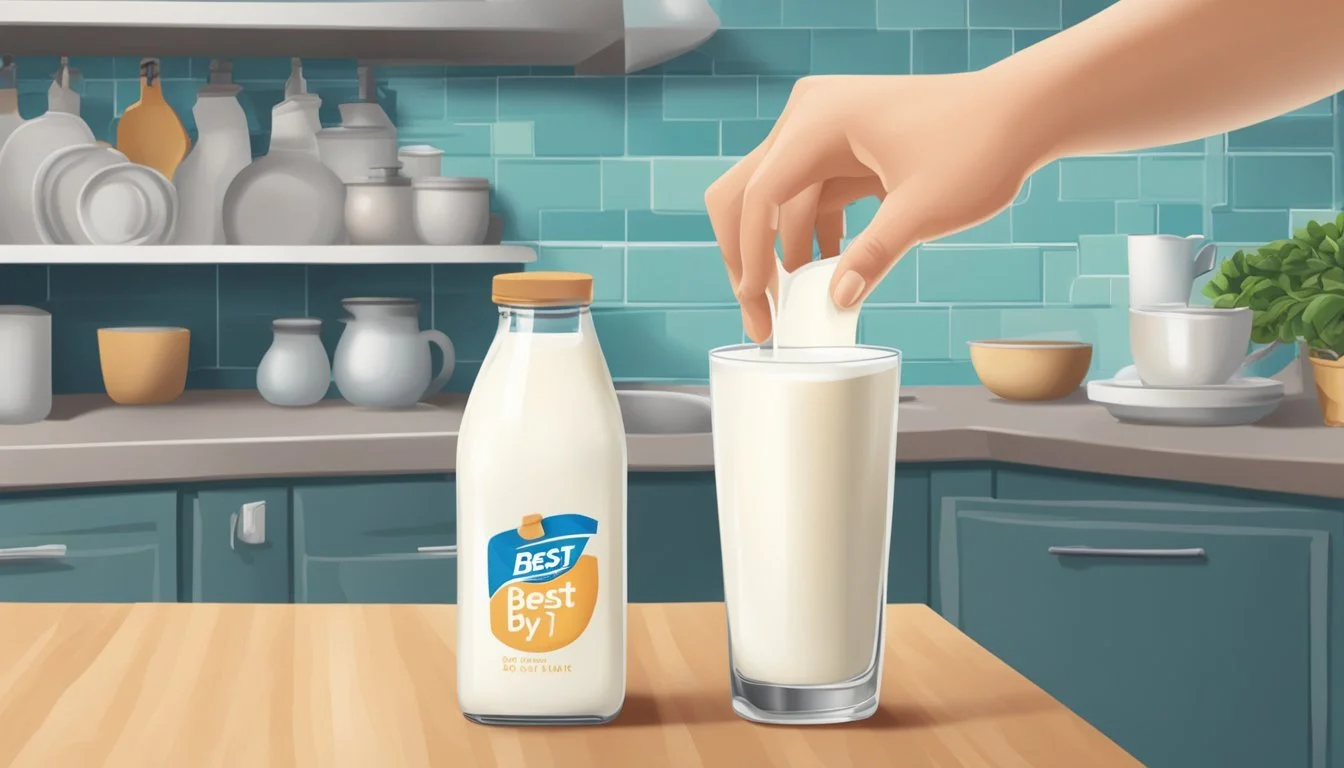How Long Does Soy Milk Last?
Understanding Its Shelf Life and Storage Tips
Soy milk is a popular dairy alternative made from soybeans, appreciated for its nutritional content and versatility. It is sold in various forms, including refrigerated and shelf-stable cartons. The question of its longevity is important to consumers because soy milk's shelf life affects both its taste and safety.
Once a carton of soy milk is opened, refrigeration is essential to maintain its freshness. Typically, opened soy milk remains in good condition for 7 to 10 days when stored properly in the fridge. Soy milk's longevity can be subject to factors such as the initial quality of the product, the temperature at which it is stored, and how it is handled post-opening.
Unopened soy milk, meanwhile, has a longer shelf life. The expiration date printed on the carton is a reliable indicator of its unopened shelf life. Shelf-stable soy milk can last for several months until the printed date, provided it is kept in a cool, dry place away from direct sunlight and heat sources. Refrigerated varieties should be stored in the fridge and consumed by the expiration date on the packaging. It's important to note that signs of spoilage such as changes in smell, taste, or texture should always be heeded, regardless of the storage guidelines.
Understanding Soy Milk
Soy milk has become a popular plant-based alternative to dairy milk, known for its nutritional benefits and versatility in various dietary needs.
Soybeans and Milk Alternatives
Soy milk is derived from soybeans, which are legumes native to East Asia. They are a staple in many diets and have a long history of cultivation for their rich protein content and adaptability in various culinary applications. As a milk alternative, soy milk is crafted by soaking, grinding, and boiling soybeans, followed by filtering out the particulate to produce a smooth, creamy liquid.
Distinctive attributes of soybeans in the context of milk alternatives:
Plant-based: Ideal for vegetarians and vegans.
Non-dairy: Suitable for lactose-intolerant individuals.
Versatility: Easily flavored or fortified, adaptable to recipes.
Nutritional Value
Soy milk stands out due to its impressive nutritional profile which closely mirrors that of dairy milk. It's naturally rich in protein and provides essential vitamins and minerals, with many commercial varieties fortified to enhance their nutritive value.
Key nutritional components of soy milk:
Protein: Essential amino acids for muscle maintenance and repair.
Vitamins: Often fortified with vitamins A, B12, and D.
Minerals: Contains minerals such as potassium and magnesium.
Calcium: Commonly fortified to levels comparable to cow's milk.
The nutritional content can vary between brands, so it's important for consumers to read product labels to understand the specific benefits of the soy milk they are purchasing.
Shelf Life and Storage
The duration that soy milk remains consumable depends significantly on its packaging and storage conditions, with distinct differences between shelf-stable and refrigerated varieties, and notably contrasts pre- and post-opening.
Shelf-Stable vs. Refrigerated Soy Milk
Shelf-stable soy milk undergoes ultra-high temperature processing and is sealed in aseptic packaging, enabling it to resist spoilage without refrigeration until opened. In contrast, refrigerated soy milk is pasteurized and must be kept cold from production to consumption to maintain its freshness.
Unopened Soy Milk Duration
Shelf-stable soy milk typically has an expiration date ranging up to 12 months from its manufacturing date when stored in a cool, dry place. However, refrigerated soy milk generally has a shorter shelf life and should adhere to the expiry date printed on the package.
Opened Soy Milk Lifespan
Once opened, both shelf-stable and refrigerated soy milk need to be stored in the refrigerator. Opened shelf-stable soy milk should be consumed within 7-10 days, while opened refrigerated soy milk can have a slightly variable lifespan, potentially shorter, as indicated by the brand-specific guidelines.
Signs of Spoilage
When assessing whether soy milk has gone bad, one should pay attention to visual, olfactory, and textural signs of spoilage, as any deviation from the norm can indicate that the product is no longer safe for consumption.
Visual and Textural Changes
Soy milk in good condition should appear smooth and maintain an off-white color. Any visual changes, such as a lumpy texture or curdling, are clear indicators that the soy milk has spoiled. These are the results of bacterial activity, which can make the liquid separate and coagulate.
Odor and Taste Assessment
A sour or unpleasant smell is a telltale sign of bad soy milk. Spoilage is also evident in the taste; soy milk that has gone bad will often have a sour flavor. These sensory indicators are reliable markers as they reflect the chemical changes occurring within the product due to the presence of spoilage organisms.
Mold and Contamination Indicators
The presence of mold, which may appear as spots or fuzz on the surface, is a definitive sign of contamination and spoilage. Consuming milk with evident mold growth or other forms of contamination can lead to foodborne illness. One should always inspect the soy milk for any unusual appearances or consistencies before usage.
Proper Storage Techniques
Proper storage of soy milk is pivotal in maintaining its freshness and extending its shelf life. Factors such as temperature control, minimizing air exposure by ensuring proper sealing, and adhering to storage practices play essential roles.
Temperature and Environment
Soy milk requires consistent temperature control to remain fresh. For unopened shelf-stable soy milk, one can store it at room temperature in a cool, dark place, away from direct sunlight and heat sources. Once opened, the soy milk should be stored in the refrigerator to keep the temperature steady, ideally at or below 40°F (4°C).
Sealing and Air Exposure
After opening, soy milk must be kept in an airtight container to avoid oxidation and contamination. If the original packaging is not resealable, transferring the milk to a sealed container is advisable. Minimizing air exposure helps to preserve the quality and taste of the soy milk.
Maximizing Freshness
To ensure soy milk remains fresh, one should:
Monitor the 'use-by' date: Stick to this date for unopened shelf-stable cartons and consume refrigerated soy milk within 7-10 days after opening.
Keep storage practices clean: Always use clean utensils to avoid introducing bacteria to the milk.
Refrigerate promptly after use: Return the soy milk to the fridge immediately after serving to maintain its low temperature.
Usage and Handling
When using soy milk in various applications, it's vital to understand the proper usage techniques and handling measures to ensure both the quality of your dishes and your health.
Incorporating Into Recipes
One should shake the carton of soy milk before pouring, as separation can occur, especially in natural or less-processed products. It's suitable for a variety of recipes, from smoothies to baking. For a creamier texture in coffee, soy milk can serve as an excellent creamer.
Safety Precautions
The safety of soy milk is paramount; one must keep an unopened carton in a cool, dry place and move it to the refrigerator once opened. To reduce health risks such as food poisoning, with symptoms like nausea or vomiting, the consumer should discard the soy milk if any changes in smell, taste, or texture are detected, signaling spoilage.
Serving and Preparation
Soy milk must be well-refrigerated after opening and consumed within 7 to 10 days. When serving, ensure it's adequately chilled to maintain freshness. Any leftover soy milk should be returned to the refrigerator immediately, limiting exposure to air and high temperatures.
Extending Soy Milk's Life
To extend the shelf life of soy milk, one can employ various storage methods such as freezing or refrigeration. These practices are essential after opening soy milk to ensure its longevity and safety for consumption.
Freezing Soy Milk
Freezing soy milk is an effective way to preserve its quality for an extended period. To freeze soy milk properly:
Pour the soy milk into an airtight container, leaving some space to allow the liquid to expand as it freezes.
Label the container with the date, as frozen soy milk is best used within six months for optimal taste.
Thaw in the refrigerator before consumption, but avoid refreezing as it can affect the product's texture and flavor.
Refrigeration After Opening
Once opened, soy milk must be refrigerated to maintain its freshness:
Refrigerate promptly at or below 40°F (4°C) and consume within 7-10 days.
Store the carton away from the fridge door to reduce temperature fluctuations.
Cover the opened soy milk container tightly to prevent absorption of other flavors and potential contamination.
By using these methods, one can significantly extend the usable life of soy milk.
Identifying Bad Soy Milk
Consumers can identify spoiled soy milk by paying attention to several key indicators. Smell is the primary and most evident sign of spoilage. Fresh soy milk has a mild, sweet, or neutral scent. If one detects a sour or foul odor, the soy milk has likely gone bad and should not be consumed.
Another factor to assess is texture. Good soy milk possesses a smooth consistency. Any presence of lumpiness or curdled appearance suggests that the soy milk should be discarded.
Color can also be indicative of soy milk’s condition. While fresh soy milk typically has a uniform, pale white hue, any discoloration or yellowing indicates deterioration.
Here's a quick reference guide for identifying bad soy milk:
Sign of Spoilage Description Smell Sour or unusual odor Texture Lumpy or curdled Color Discoloration or yellowing
The taste test is not recommended, as consuming spoiled soy milk can be harmful to one’s health. If one has doubts regarding the soy milk's condition after checking the above aspects, it is safer to err on the side of caution and dispose of the product. It should be noted that these guidelines apply to opened soy milk, as unopened and properly stored soy milk can last much longer.
Alternatives and Substitutes
In the realm of non-dairy milks, each type offers unique benefits and varies in shelf life. Understanding these differences and the nuances of homemade products helps consumers make informed choices.
Comparing with Other Non-Dairy Milks
Non-dairy milks, including soy milk, almond milk, and oat milk, serve as popular substitutes for dairy milk. Below is a comparison of their typical shelf lives when stored properly at or below 40°F:
Soy Milk: 7-10 days post opening
Almond Milk: 7-10 days post opening
Oat Milk: 7-10 days post opening
These milk alternatives are often fortified with vitamins and minerals to match the nutritional profile of dairy milk. Consumers with particular health considerations might choose one type over another based on protein content, sugar levels, or allergen presence.
Homemade Soy Milk Considerations
When it comes to homemade soy milk, shelf life can be significantly shorter due to the absence of preservatives. Homemade soy milk typically lasts:
Refrigerated: 3-5 days
It's important to note that the quality of homemade soy milk can be influenced by factors such as the soaking time of soybeans and the temperature at which the milk is pasteurized. Consumers often prefer homemade options for a fresher taste and to avoid added sugars or preservatives commonly found in commercial products.
Buying and Consumption Tips
When selecting soy milk, it is crucial for consumers to understand packaging labels, select the appropriate type for their needs, and consider the product's shelf life for their intended use.
Decoding Packaging and Expiry Dates
Expiry Date: The expiration date on a carton of soy milk is a manufacturer's estimate of when the milk will start to decline in quality. Shelf-stable soy milk typically has a longer expiration date and does not require refrigeration until opened. Consumers can find this date on the packaging, and it is important to adhere to it for quality and safety.
Packaging: Soy milk packaging, whether a carton or bottle, provides vital information on storage conditions and shelf life. Some soy milk comes in non-refrigerated cartons and is designed to be shelf stable, while refrigerated soy milk packaging is meant to stay cold at all times.
Choosing the Right Soy Milk
Choosing the right soy milk depends on the intended use and personal preference. If intended for general consumption, like drinking straight or with cereal, a regular refrigerated soy milk might be ideal. For a longer-lasting option or when shopping in bulk, shelf-stable soy milk in aseptic cartons is preferable, as it can be stored unopened without refrigeration for 6-12 months.
Usage for Specific Applications
Different applications may require different forms of soy milk. If one is using soy milk as a coffee creamer, a barista blend might hold up better against heat and acidity. In contrast, for smoothies or recipes where the milk will be blended or cooked, any variety can serve the purpose. For convenience, freezing in a mason jar could be ideal, but it may alter the texture, making it more suitable for cooking than drinking.
It's also worth noting that there are various milk alternatives on the market, and while this section is specific to soy milk, similar guidelines apply when choosing and using other plant-based milks.

